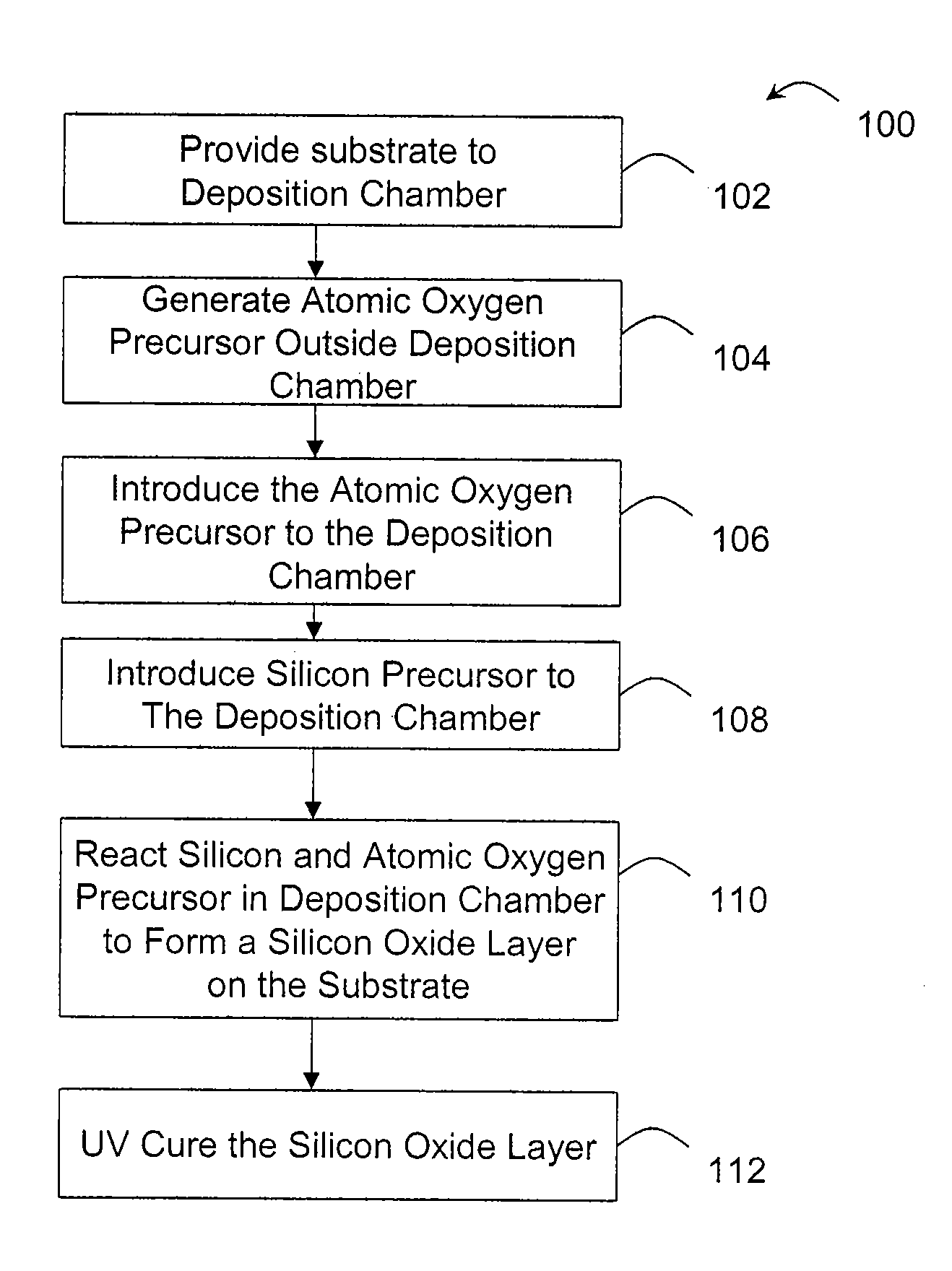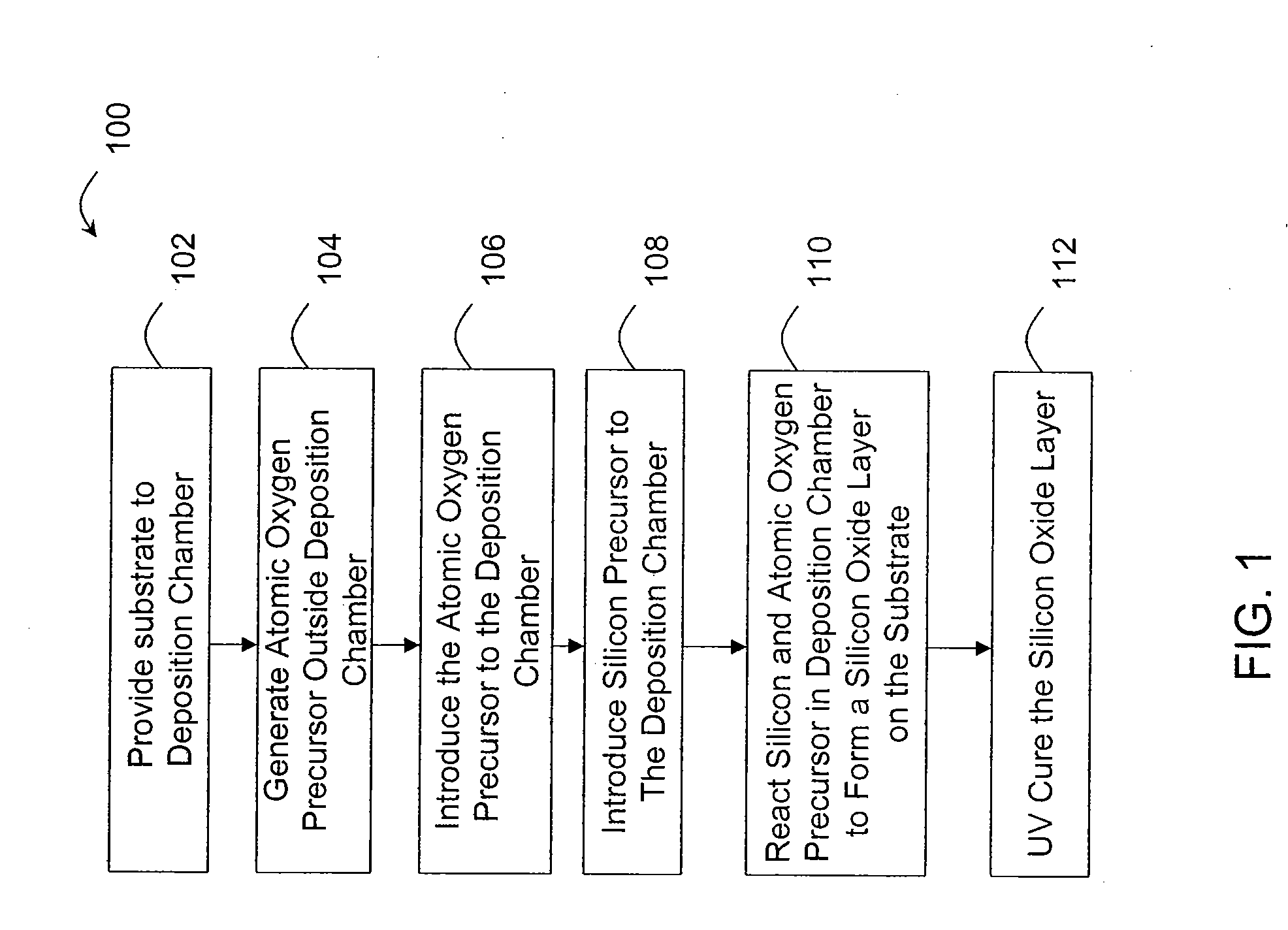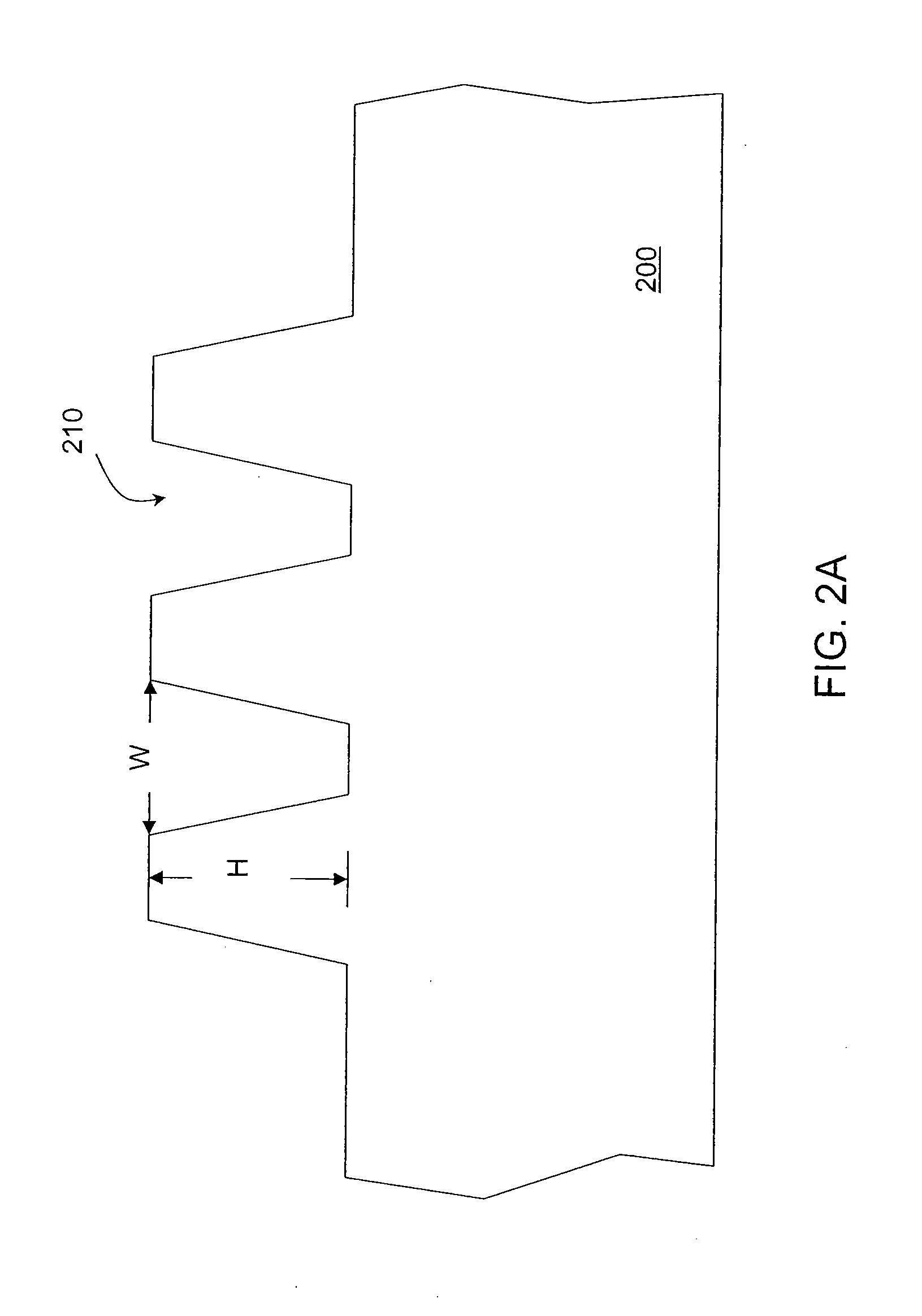Methods for Forming a Dielectric Layer Within Trenches
a dielectric layer and trench technology, applied in the direction of coatings, metallic material coating processes, chemical vapor deposition coatings, etc., can solve the problems of too much electrical noise, difficult to completely fill gaps and trenches in these structures without creating, and fabrication problems
- Summary
- Abstract
- Description
- Claims
- Application Information
AI Technical Summary
Benefits of technology
Problems solved by technology
Method used
Image
Examples
Embodiment Construction
[0026]Exemplary methods are described for forming a silicon oxide layer having a desired film density, a carbon concentration and / or a wet etch rate ratio (WERR) after a UV curing within an oxygen-containing environment. The UV curing may desirably increase the density of the silicon oxide layer and / or reduce the wet etch rate ratio of the silicon oxide layer.
[0027]Some exemplary methods include reacting a silicon precursor and an atomic oxygen precursor at a processing temperature of about 150° C. or less to form a silicon oxide layer over a substrate. The silicon oxide layer is ultra-violet (UV) cured within an oxygen-containing environment. Other exemplary methods include interacting a silicon-containing precursor with at least one radical nitrogen precursor at a processing temperature of about 150° C. or less to form a silicon-nitrogen containing layer over a substrate. The silicon-containing precursor may also comprise two or more silicon atoms. The silicon-nitrogen containing ...
PUM
| Property | Measurement | Unit |
|---|---|---|
| temperature | aaaaa | aaaaa |
| processing temperature | aaaaa | aaaaa |
| processing temperature | aaaaa | aaaaa |
Abstract
Description
Claims
Application Information
 Login to View More
Login to View More - R&D
- Intellectual Property
- Life Sciences
- Materials
- Tech Scout
- Unparalleled Data Quality
- Higher Quality Content
- 60% Fewer Hallucinations
Browse by: Latest US Patents, China's latest patents, Technical Efficacy Thesaurus, Application Domain, Technology Topic, Popular Technical Reports.
© 2025 PatSnap. All rights reserved.Legal|Privacy policy|Modern Slavery Act Transparency Statement|Sitemap|About US| Contact US: help@patsnap.com



